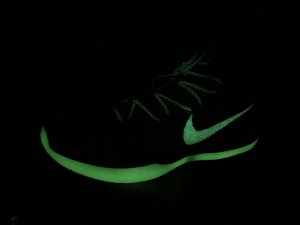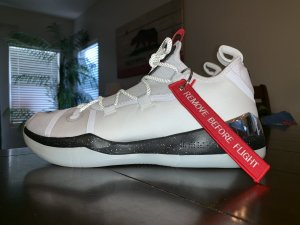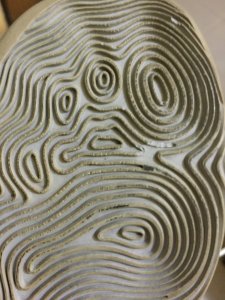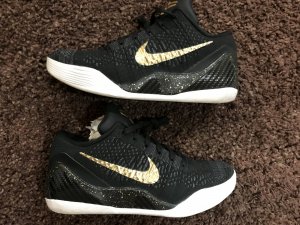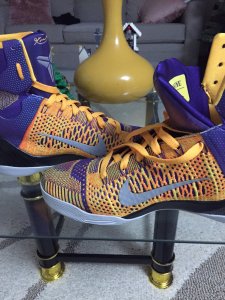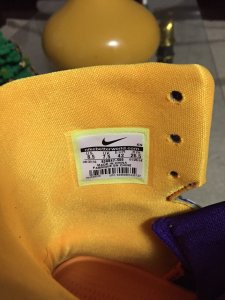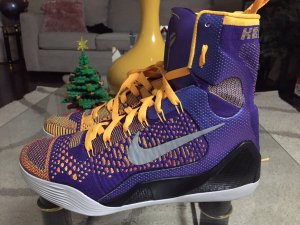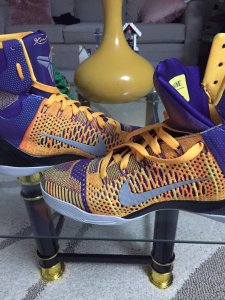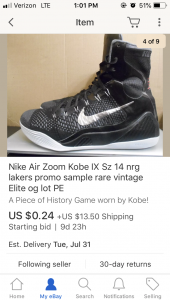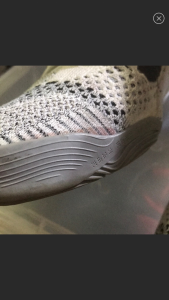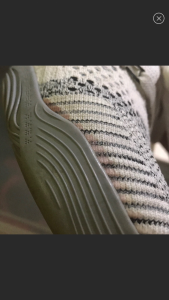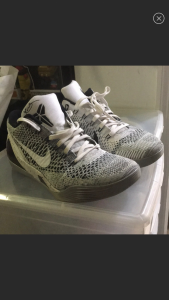The woven upper on the 29s definitely feels more flexible than the flyknit upper on the Kobe 9s, but that woven material also seems to be more densely put together compared to flyknit. From reading reviews on the 29s, the ventilation isn't that great, which probably shows how tightly packed together the woven fibers are. I think because of how dense the fibers are on the upper, the 29s have enough support to last on court without needing too much additional stuff like a layer of glue for support/backing. From what I've read, they were also able to specifically target different parts of the 29's woven upper to have more or less fiber density where it's necessary. I haven't played in the 29s yet though, so I can't speak from personal experience what I think of the upper on court.
Flyknit on the other hand is usually pretty thin, perforated, and very flexible if you think about some of the other flyknit models, and I don't know if they had the same level of control over choosing how to weave flyknit fibers together as they did with putting the 29's woven upper together. I'm not sure if there's much info out there comparing the two processes, but I'd be kinda curious to learn more about it. Maybe because of the differences in how those 2 uppers are constructed, they simply needed to add that glue backing/structure in order to extend the 9's on court lifespan. I know some people who were used to the soft flyknit uppers on the runners and NSW shoes were disappointed about how stiff the 9's upper is, but for performance's sake and longevity, you do need a higher level of support/rigidity for basketball. Otherwise you kinda risk pulling a Ginobili and having your foot bust right through the shoe on a hard cut.
 is this website fake? -------
is this website fake? ------- 








